Loudness Part 1
One of the most common questions people ask a mastering engineer is “why is my track not as loud as everyone else’s?”
In this article I’m going to explain in simple terms how humans perceive loudness and how it can be measured accurately. Since the early Motown days of pressing vinyl, there has always been a race to have the loudest cut. This was a skill developed by cutting engineers and is the foundation of mastering records. The idea being that the song would sound louder on a juke box and on the radio thus making it stand out from the rest. The loud cut was limited by the physical medium of the record and the cutting head.
When digital came along this all changed- there is a ceiling of 0 dBFS (decibel Full Scale) that is the maximum permissible limit of digital audio. Since the introduction of digital peak limiting and clipping in the 1990s the true “Loudness War” began, much to the detriment of listener enjoyment.
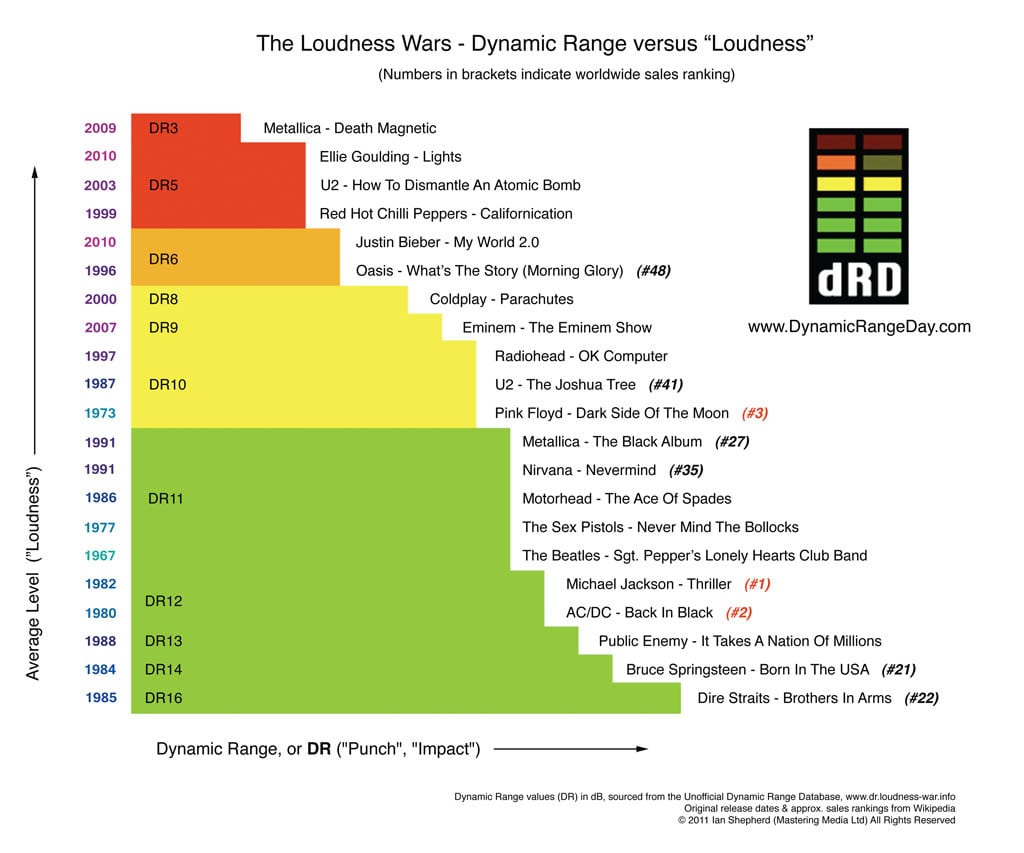
Also see here another Visual History of Loudness.
Television stations have been following loudness guidelines for years due to the many listener complaints that the ads were louder than the program content. In America this is known as the CALM act, and Australia is moving in a similar direction with OP59 standard. Most audio people know that the ads are louder do to the decrease in dynamic range of the ads compared to the normal program. Program audio has dialogue, music and background sounds so it needs to have some dynamic range in order to sound natural and also have impact for action scenes, whilst the ad is smashed to an inch of its life so the quiet parts are almost the same level as the loudest part.
Measuring loudness is quite difficult, and due to changing standards for television, accurate loudness metering has only recently been developed. Fortunately the same way of measuring loudness for broadcast is creeping into music, so when you tick Apple “Sound check” or Spotify’s “normalize” function the level of music is will remain consistent from track to track. This will be a revelation for the music industry and may put an end to the loudness war, as tracks mastered purely for loudness will actually sound worse when volume matched to music mastered at a more conservative level.
Human Perception
Sound has two properties, wavelength and amplitude. The frequency of the wavelength is measured in Hertz (Hz), and sound pressure level (SPL) is measured in Decibels (dB). The human ear of a small child can hear from 20Hz to 20kHz, and the high frequency response decreases with age and more rapidly with loud noise exposure. Just talk to a live sound engineer over dinner and you’ll get my drift. What many people don’t know is that humans do not hear the entire frequency range at the same loudness level. Furthermore; as amplitude changes, so does our ears response to the frequency spectrum.To understand why different frequencies are not heard equally, you’ll have to look at the research by Fletcher and Munson reported in a paper entitled “Loudness, its definition, measurement and calculation.”
The Y-axis represents Sound Pressure Level (dB SPL) or volume, in simple terms. The X-axis represents the frequency range. As you can see, our ears are most responsive to the middle range of the frequency spectrum around 1kHz-4kHz range right where human speech is. At lower volumes our ear does not hear the low or the high frequencies and well as the midrange. At higher volumes the curve begins to flatten out and we begin to hear a flatter frequency response compared to lower levels. The flattest response is around 85dB SPL, which is also about as loud as you should have your monitoring for 8 hours to avoid hearing damage.
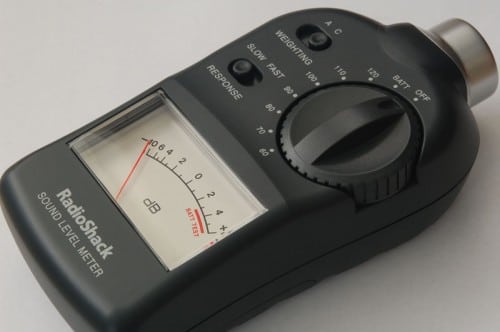
Grab an SPL meter from Jaycar, which should set you back $40 and sit in an equilateral triangle between your monitors. Ensure your monitors are away from wall and the corners of the room or you will have an inaccurate boost in the bass response. Put the meter on C weighting and play some pink noise from your DAW at -18dBFS. Once you are around 85dB SPL this is your listening reference level. You can even measure your room frequency response if by downloading test tones http://realtraps.com/test-cd.htm
Frequency Balance
What does this have to do with music loudness? Think about the different frequencies of instruments in your mix and where they sit in the audio spectrum. Here is an excellent frequency range chart that can also show you how each range is related to our hearing response:
More here: http://www.independentrecording.net
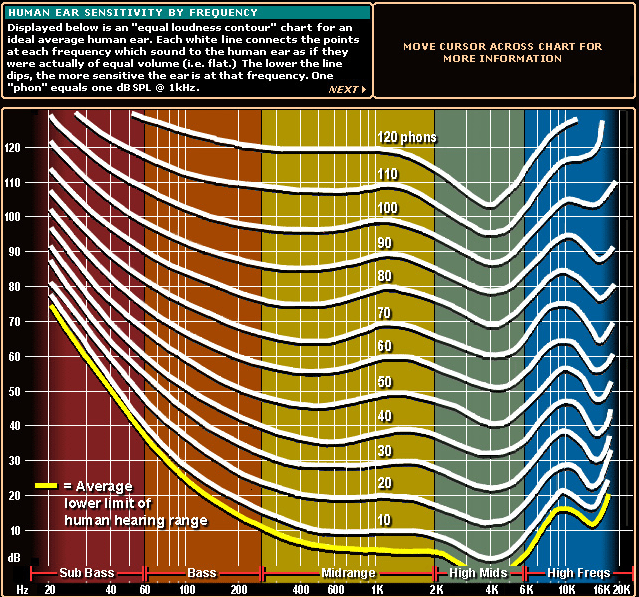
When people say to me “why is my track not as loud as everyone else’s” I point them to the mix, not the mastering. I’ve noticed over the years as clients mixes improve (meaning, they both sounded better in the control room AND in the real world), they also become louder.
Look at it like this: if you’re mixing a hard rock tune, and your guitar and bass are masking your kick and snare, you need to turn the kick and snare up louder to give them the impact you need. That means transient material that is louder relative to the more steady-state (RMS) stuff. And that means a quieter mix. Now, if you carve out some low end from the bass that allows the kick to speak with impact at a lower fader level, and carve out some midrange from the guitar that lets the snare speak at a lower fader level, your transient-to-steady-state (peak-to-RMS) level will be lower, meaning a louder mix. You will also have better separation.
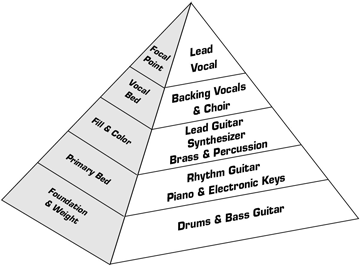
Then you’ll find that when the track is mastered and pushed to commercial loudness levels, the mix balances don’t fall apart, compared to an average mix that is pushed too hard. A word of warning though- as our ears are most sensitive to midrange, this is the area that can become unpleasant with excessive midrange boost.
The loudness of your mix mostly comes down to the frequency balance and where the spectral energy is. It also comes down to dynamic range, which I will discuss in part 2. The older VU meters and average level meters (RMS) will react strongly to low end, giving you a false representation how loud your mix is compared to others. Loudness meters take the way we hear into consideration with weighting filters and will give you a much more accurate number.
More on this in part 2 in the coming weeks!
Written by Ben Feggans.
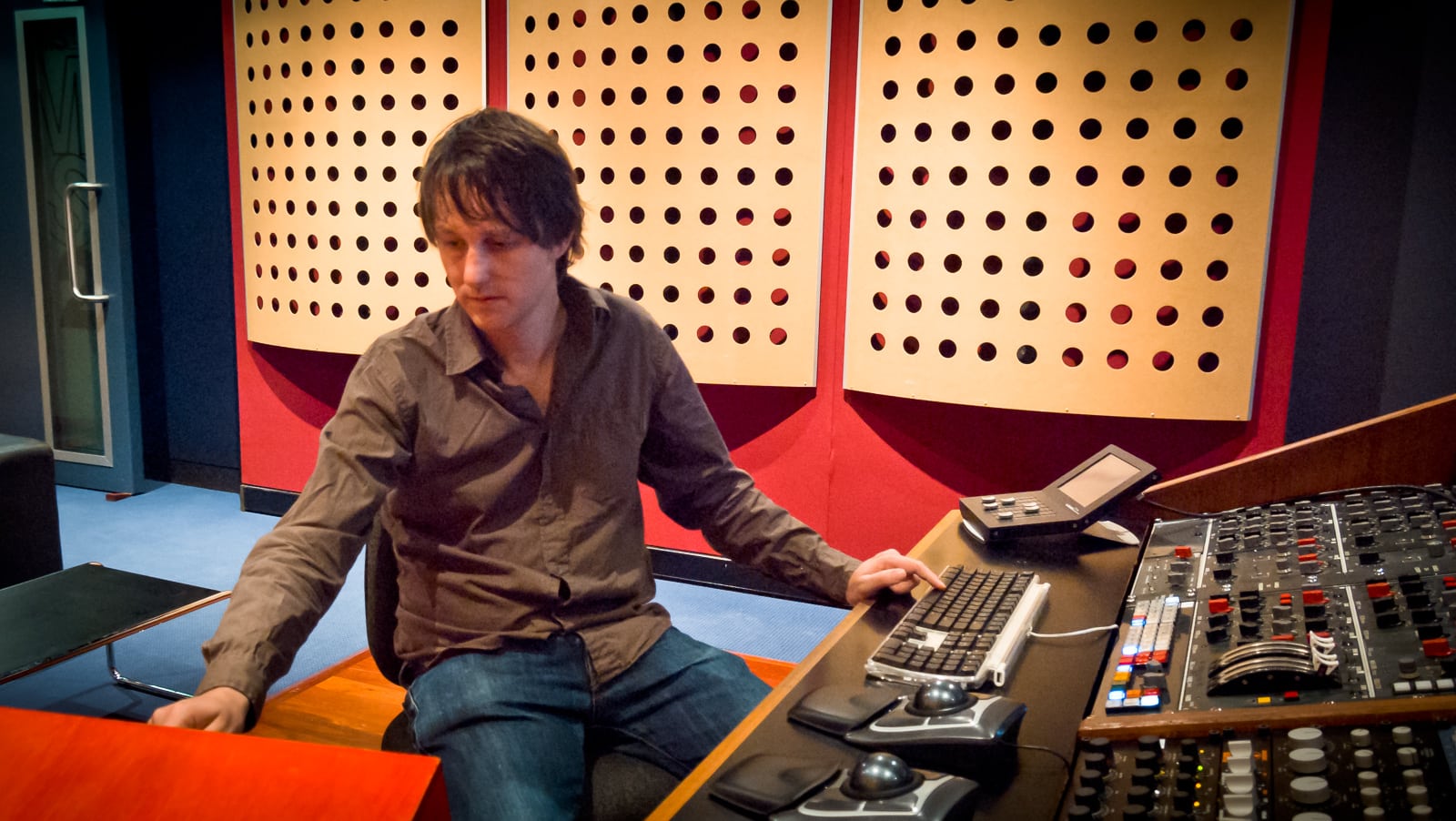
Ben is one of our 5 resident mastering engineers, and works in Mastering Suite 2.
To book Ben Feggans for a mastering session, contact Lynley via mastering@studios301.com or 02 9698 5888.

Leave a Reply